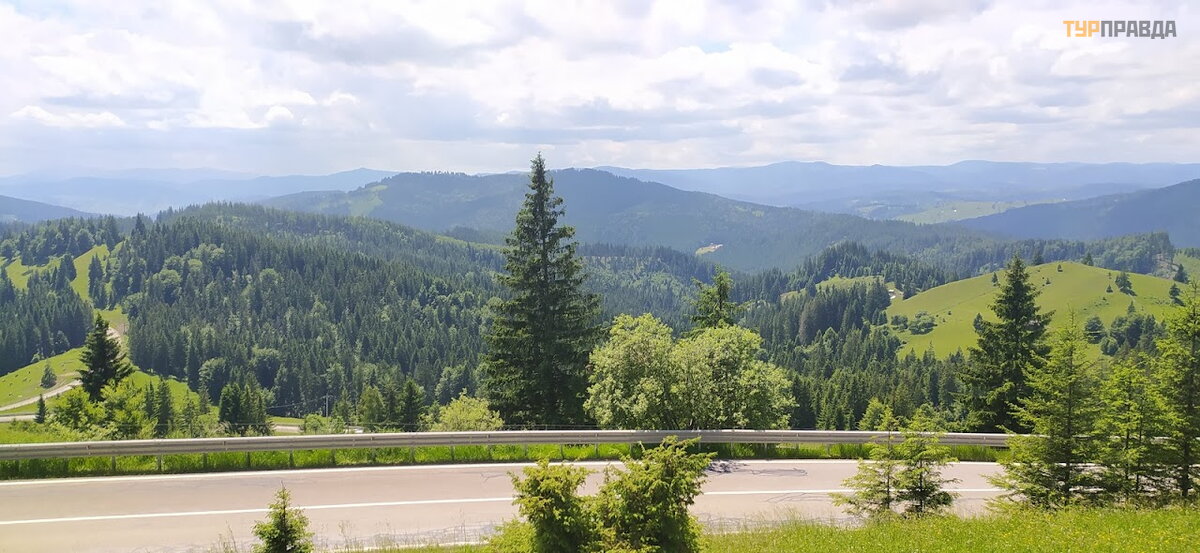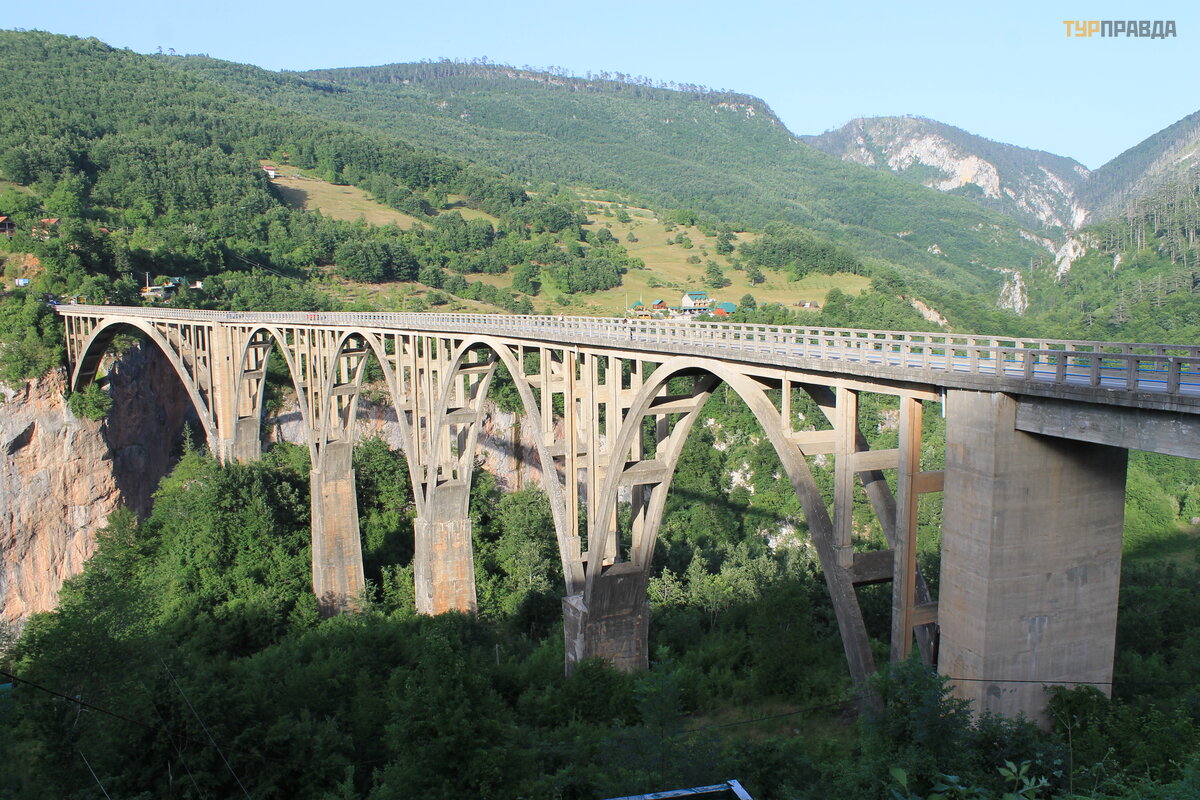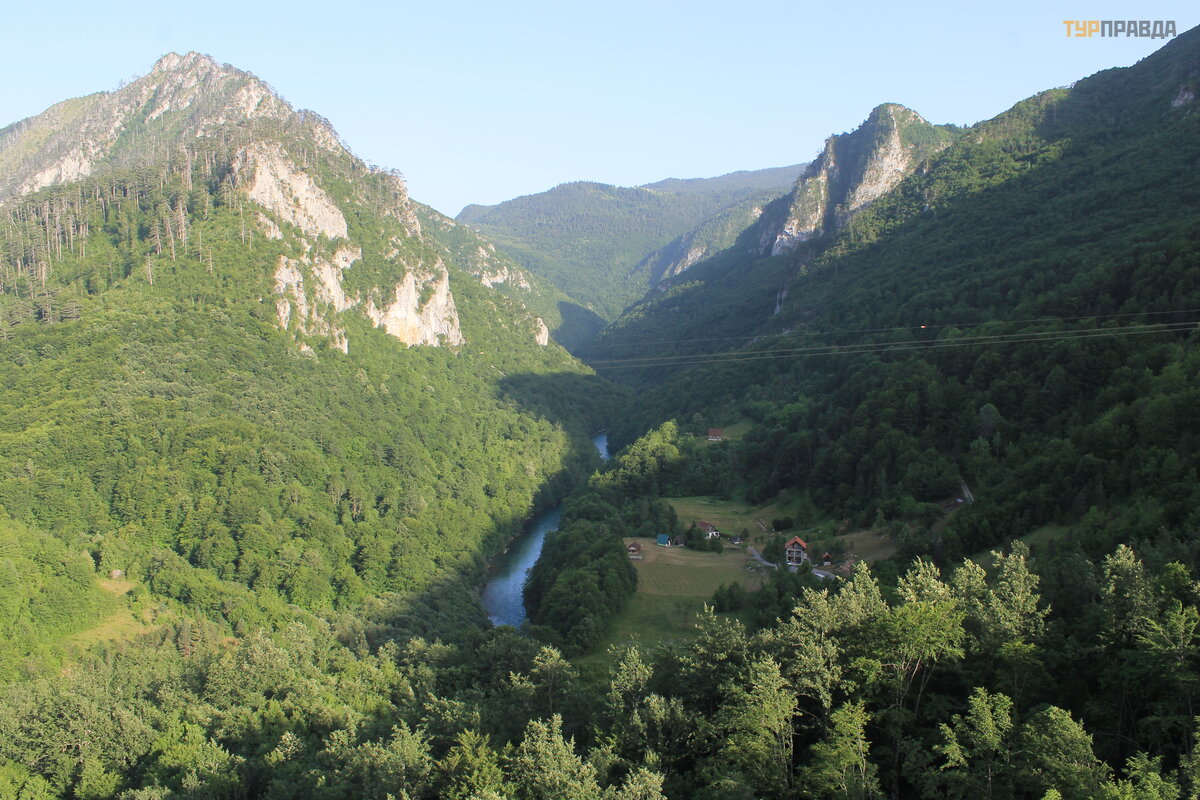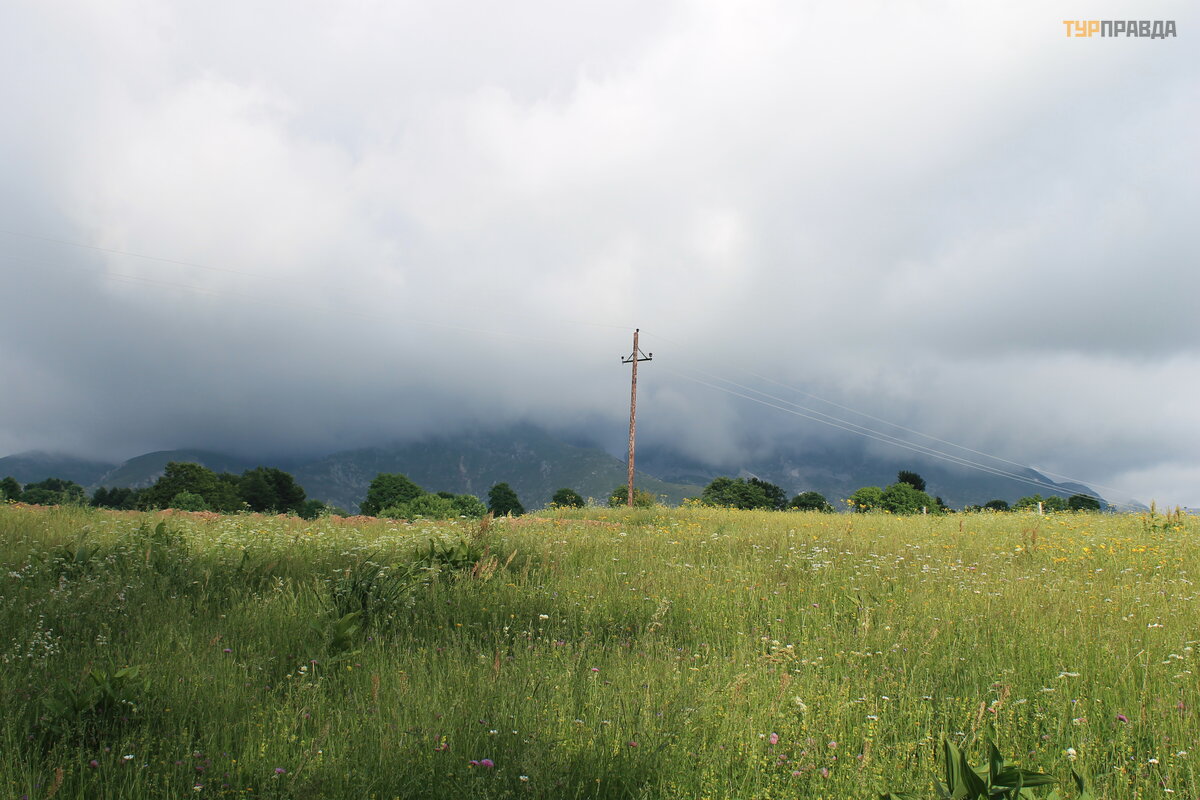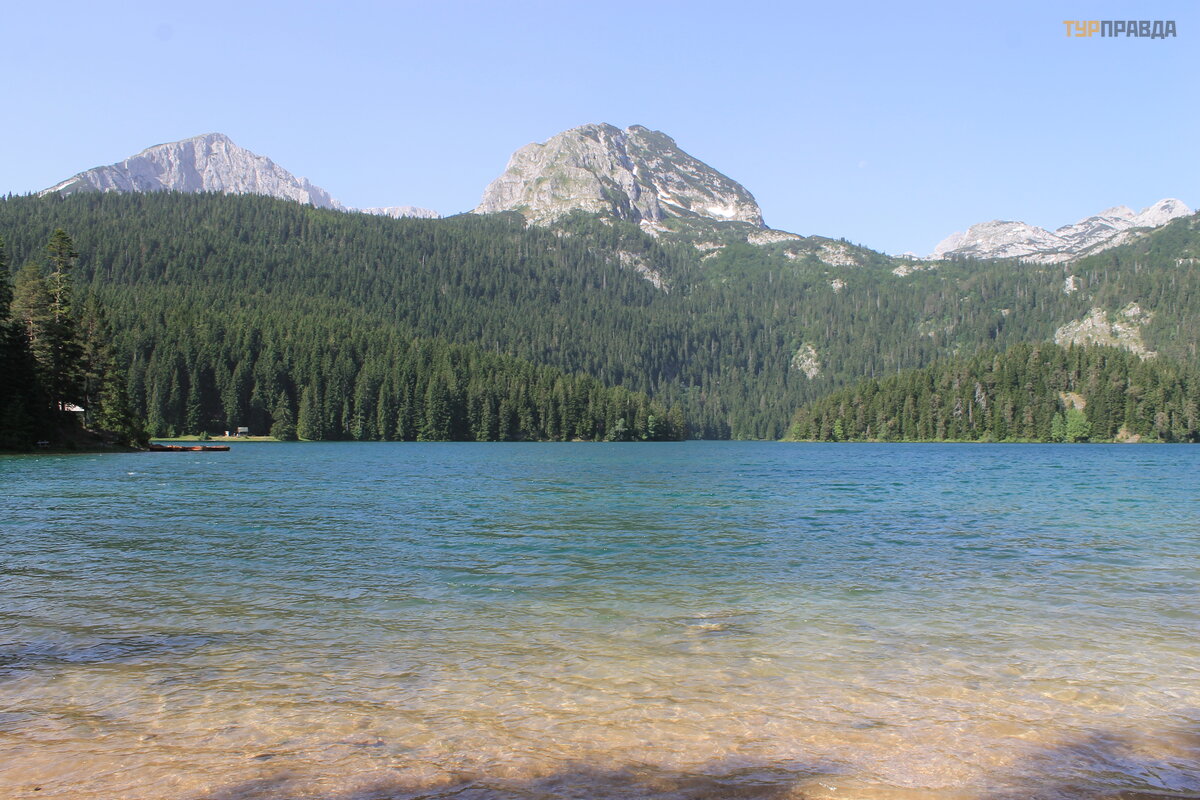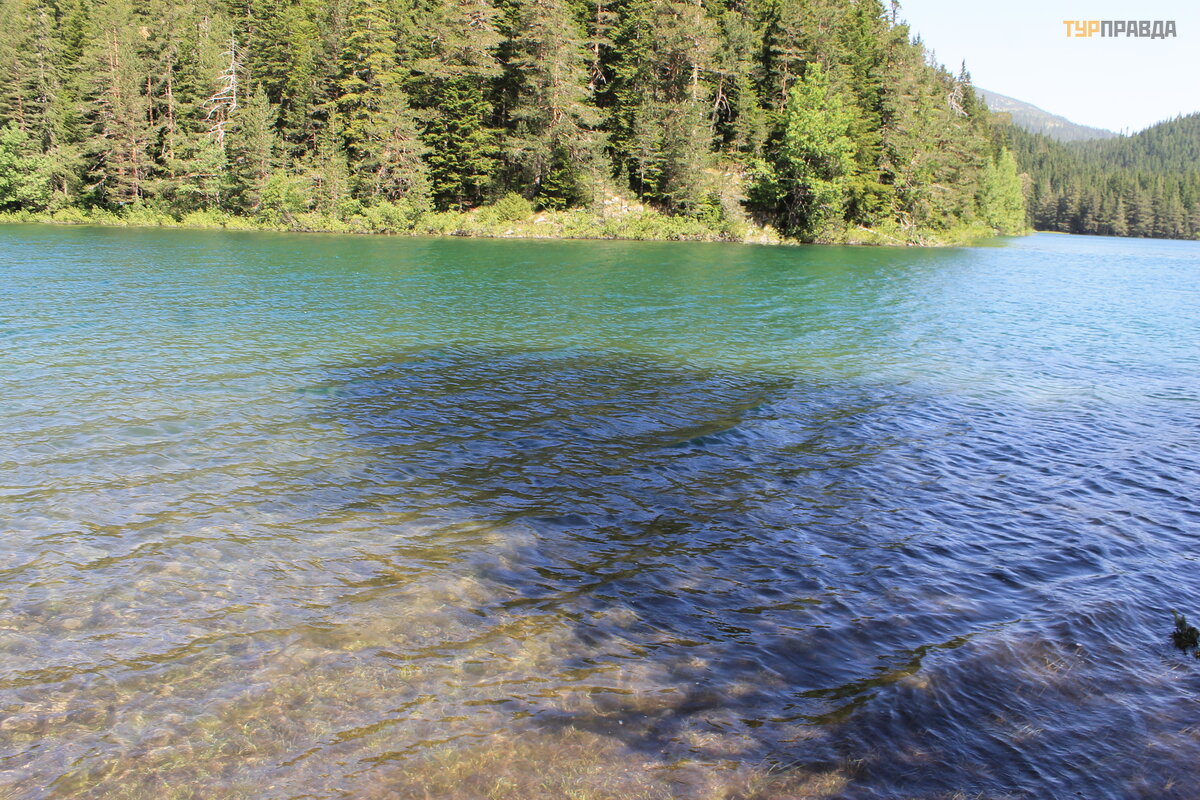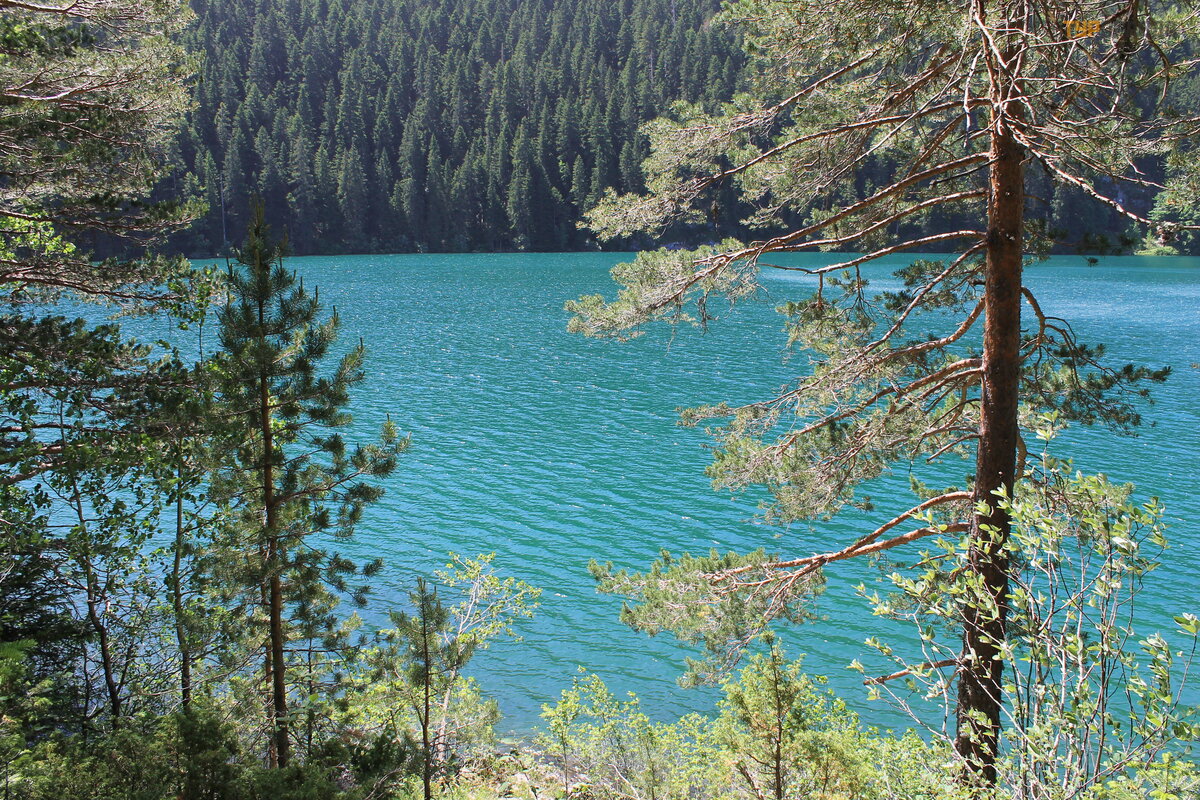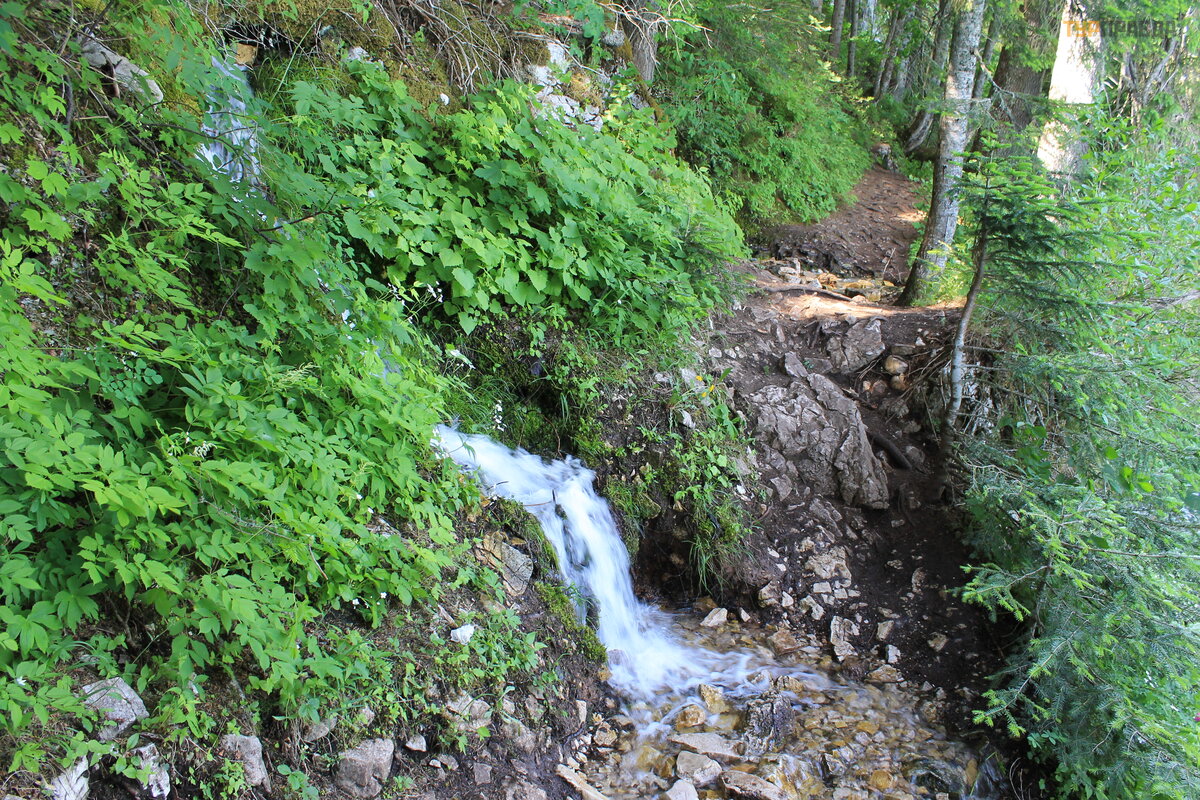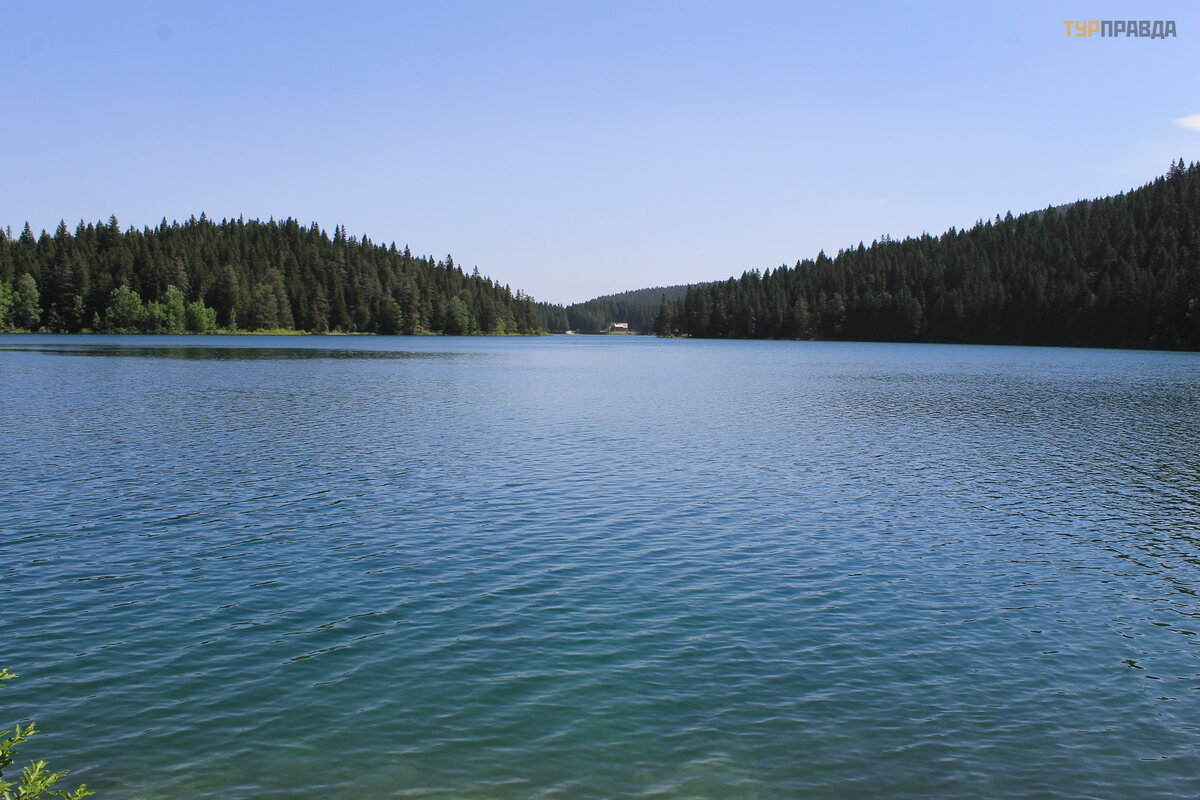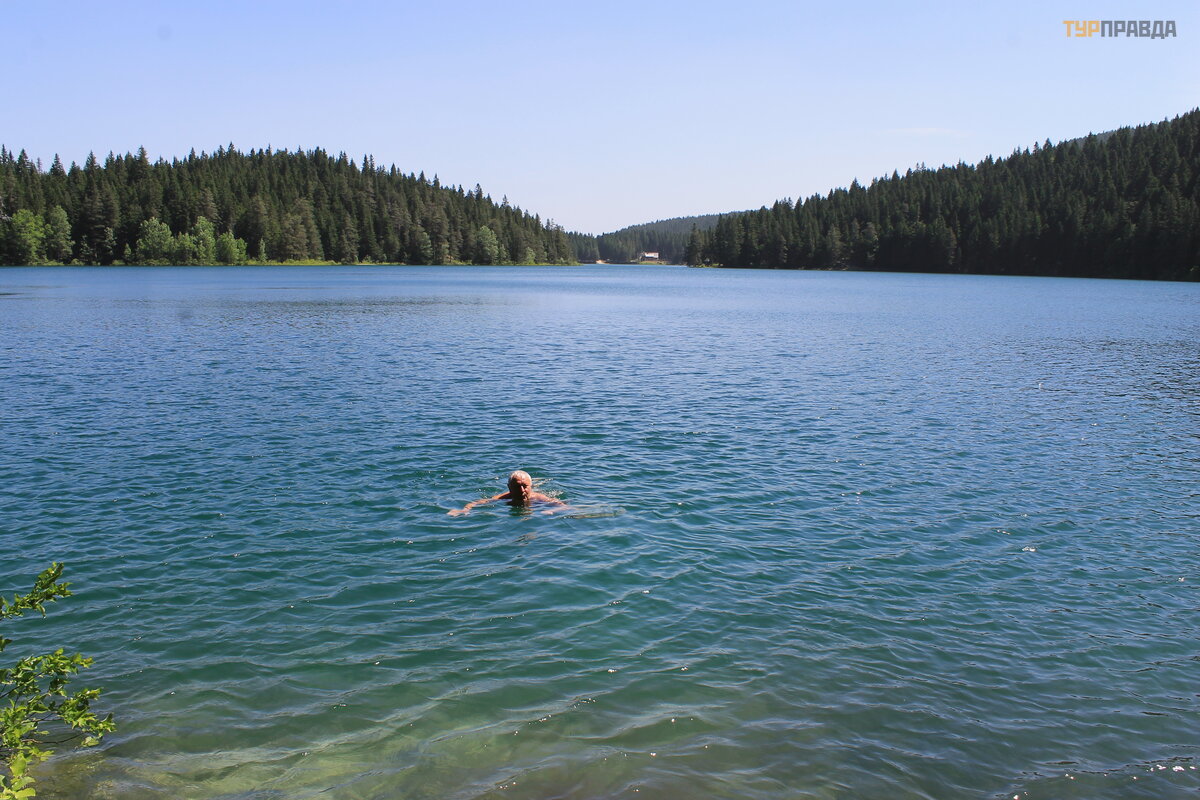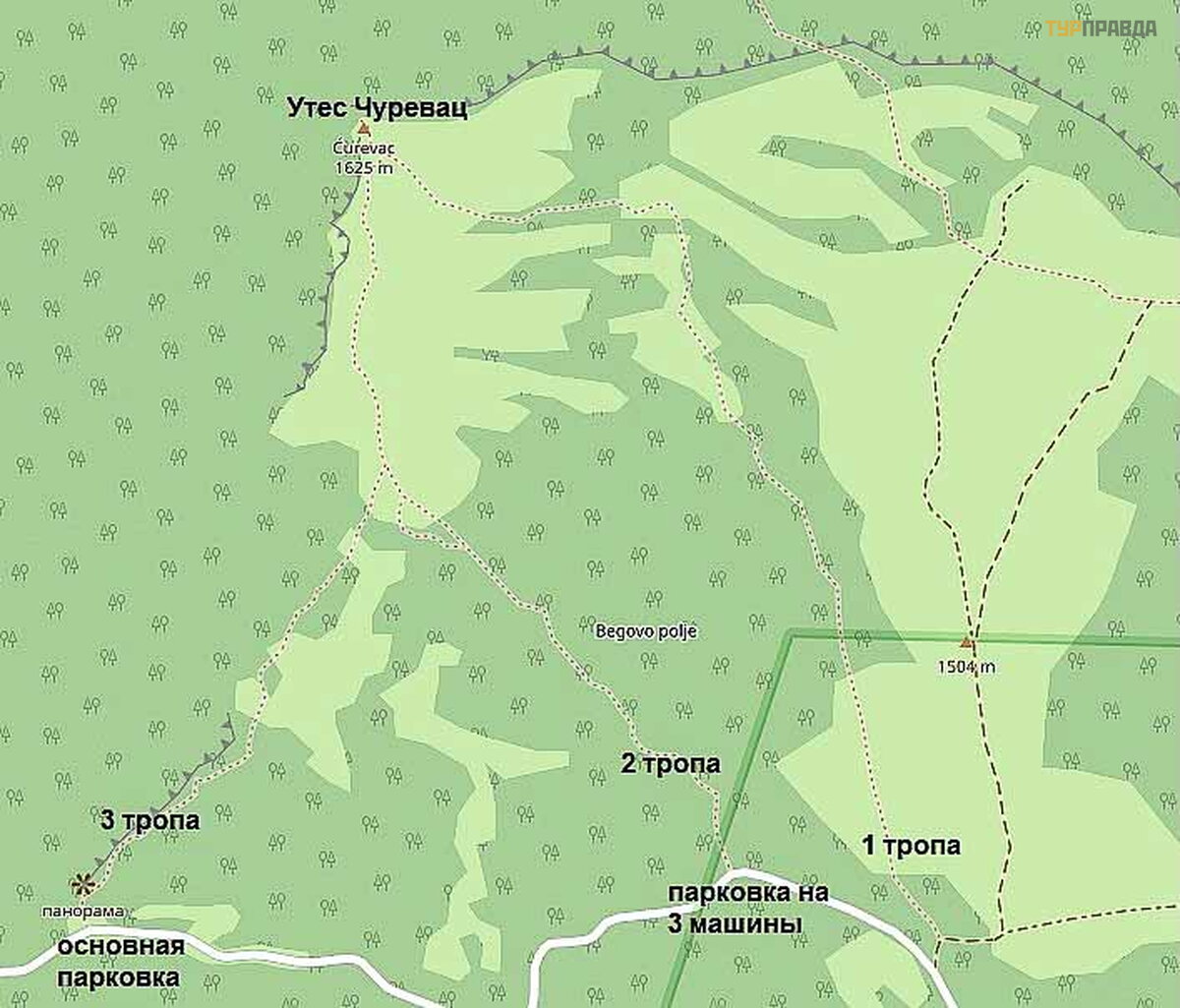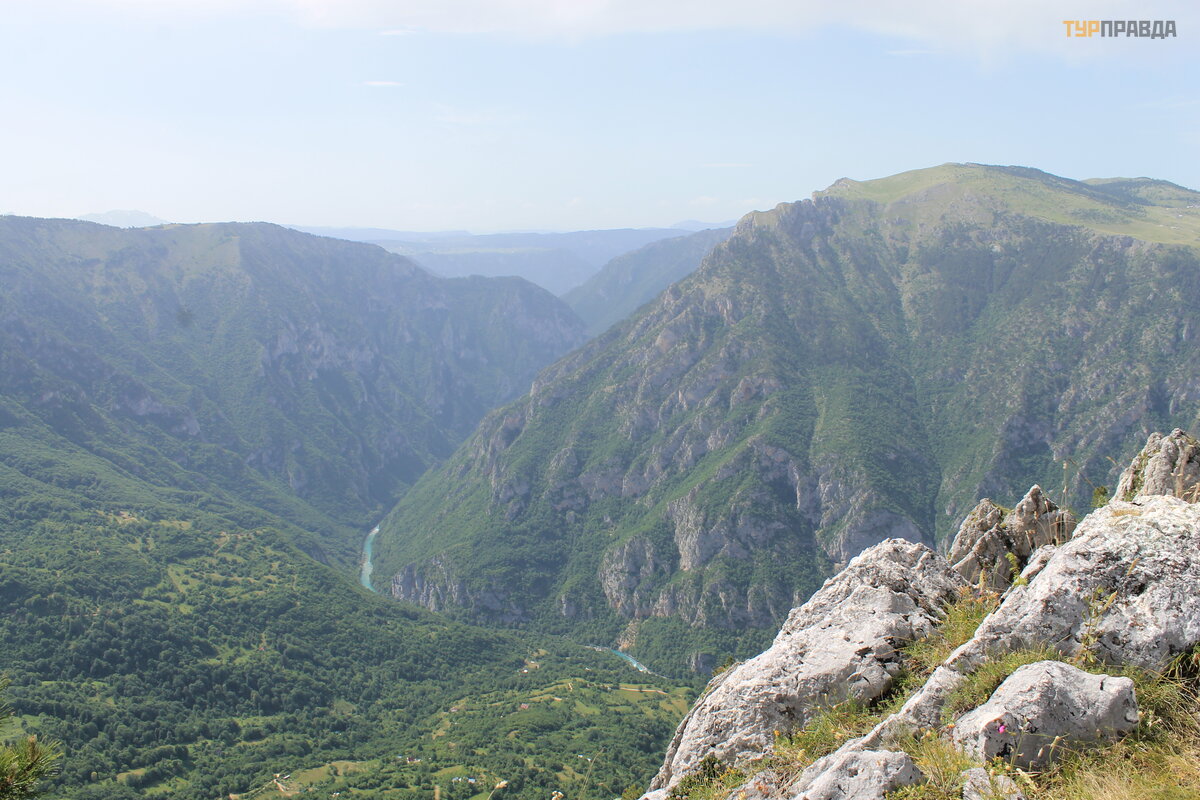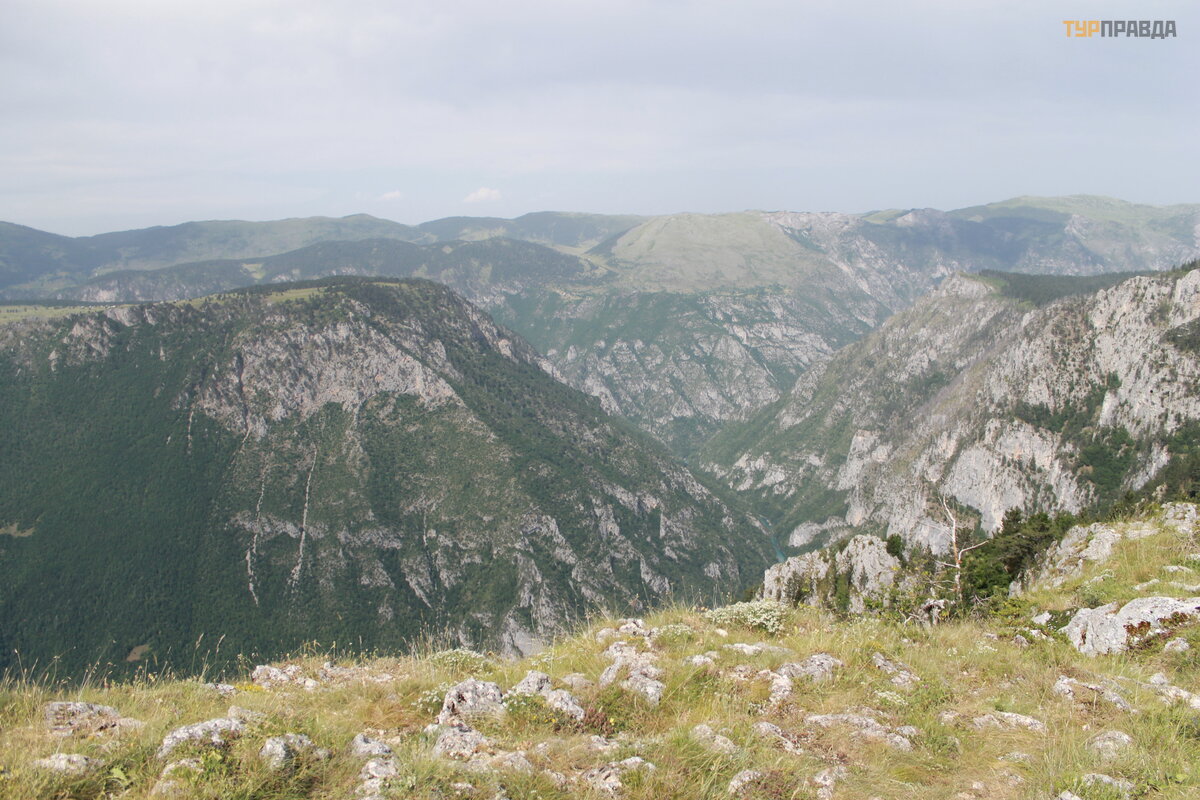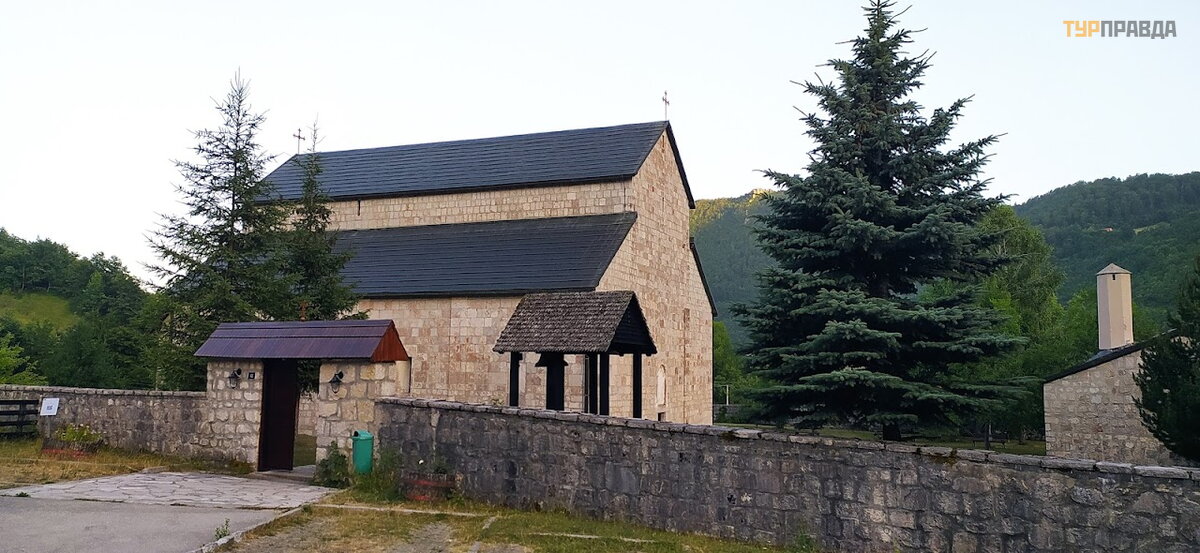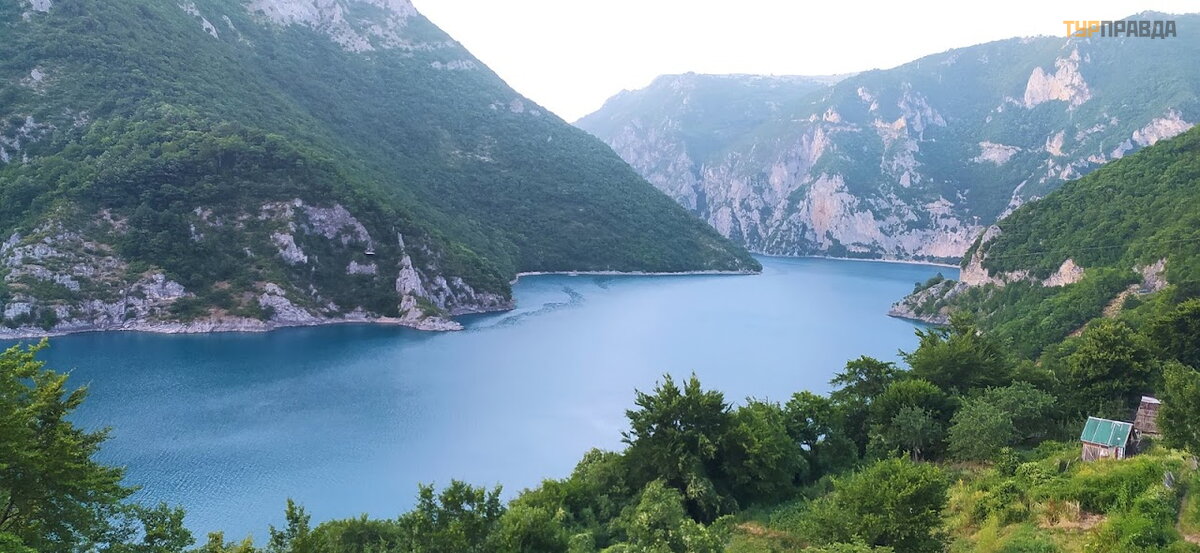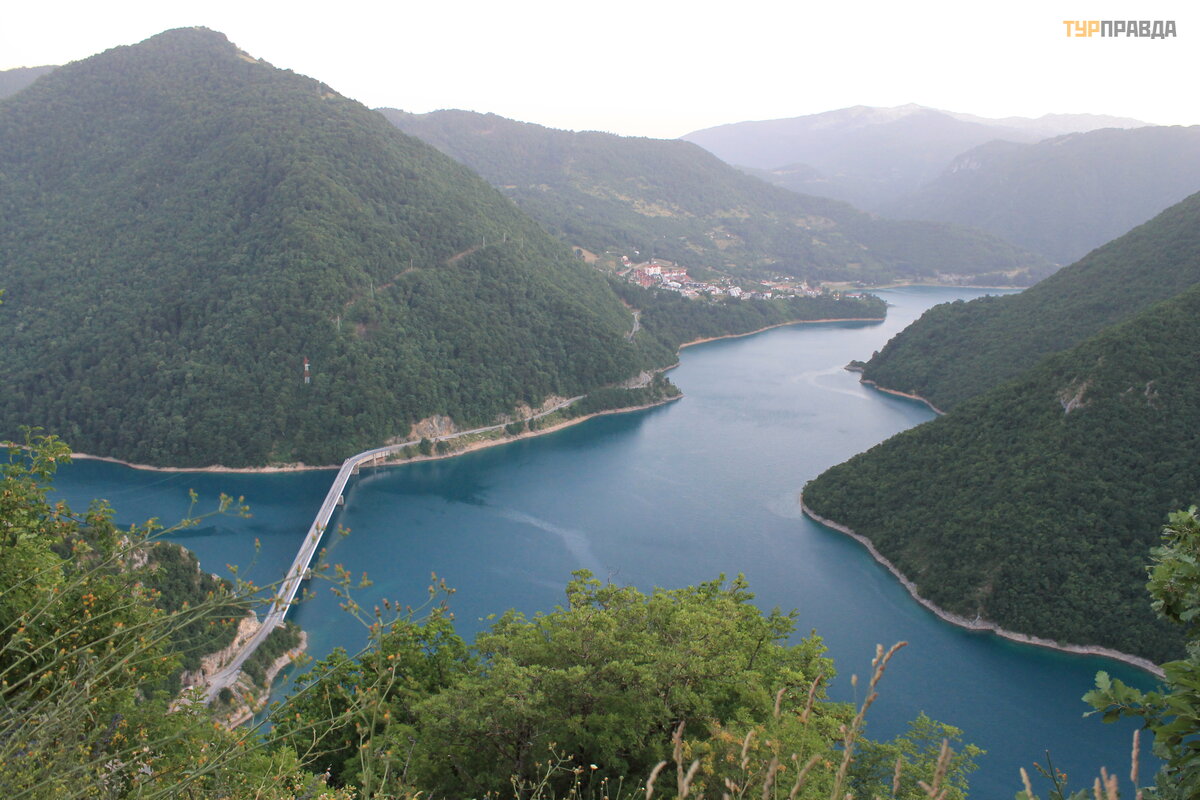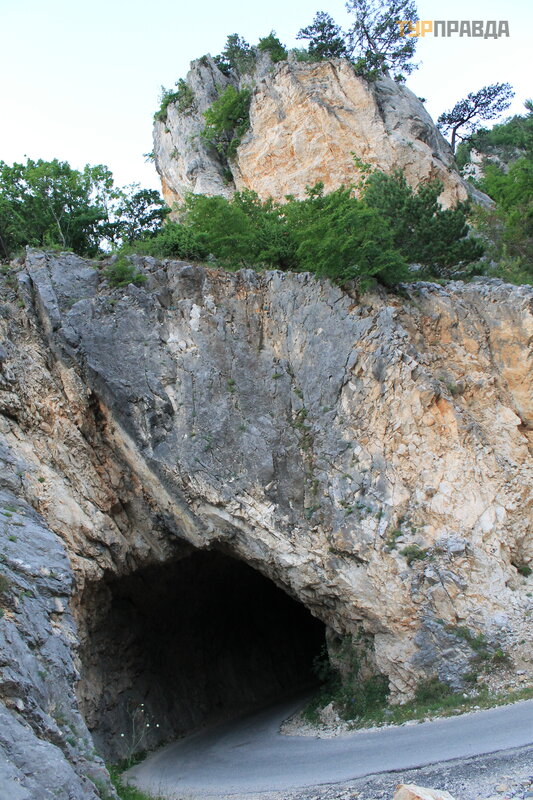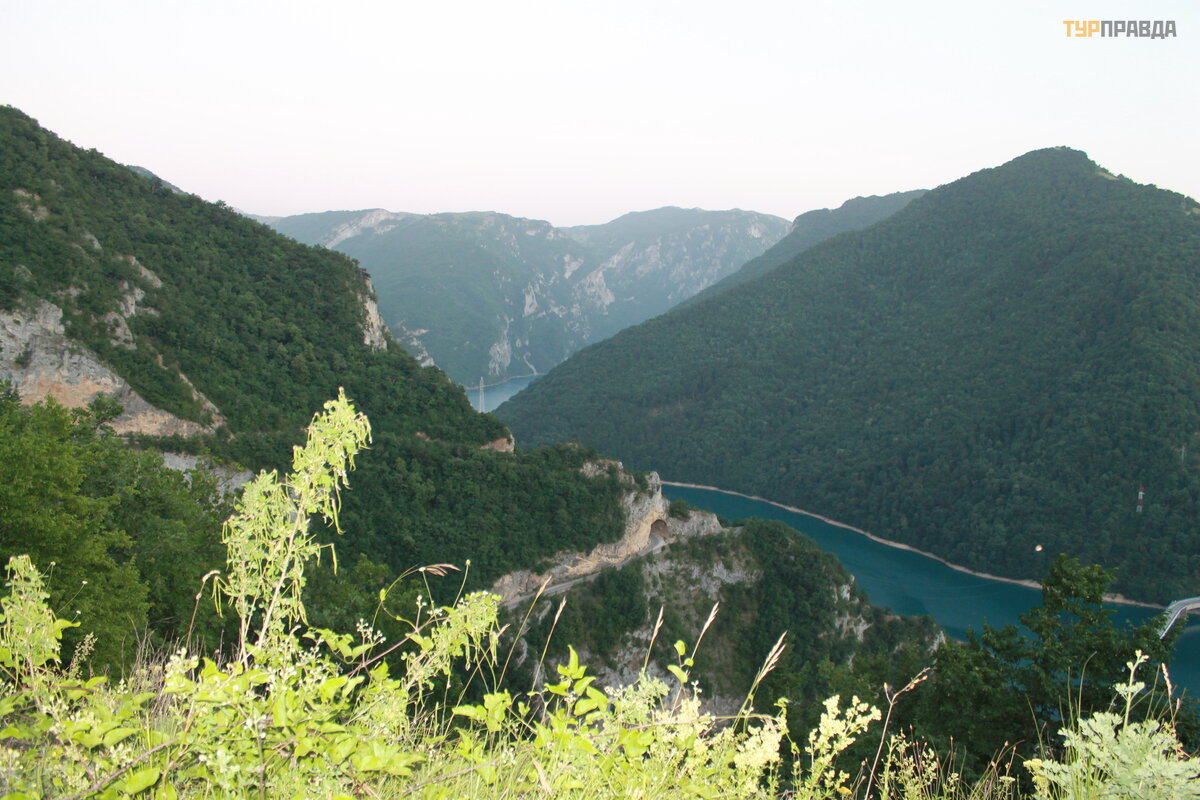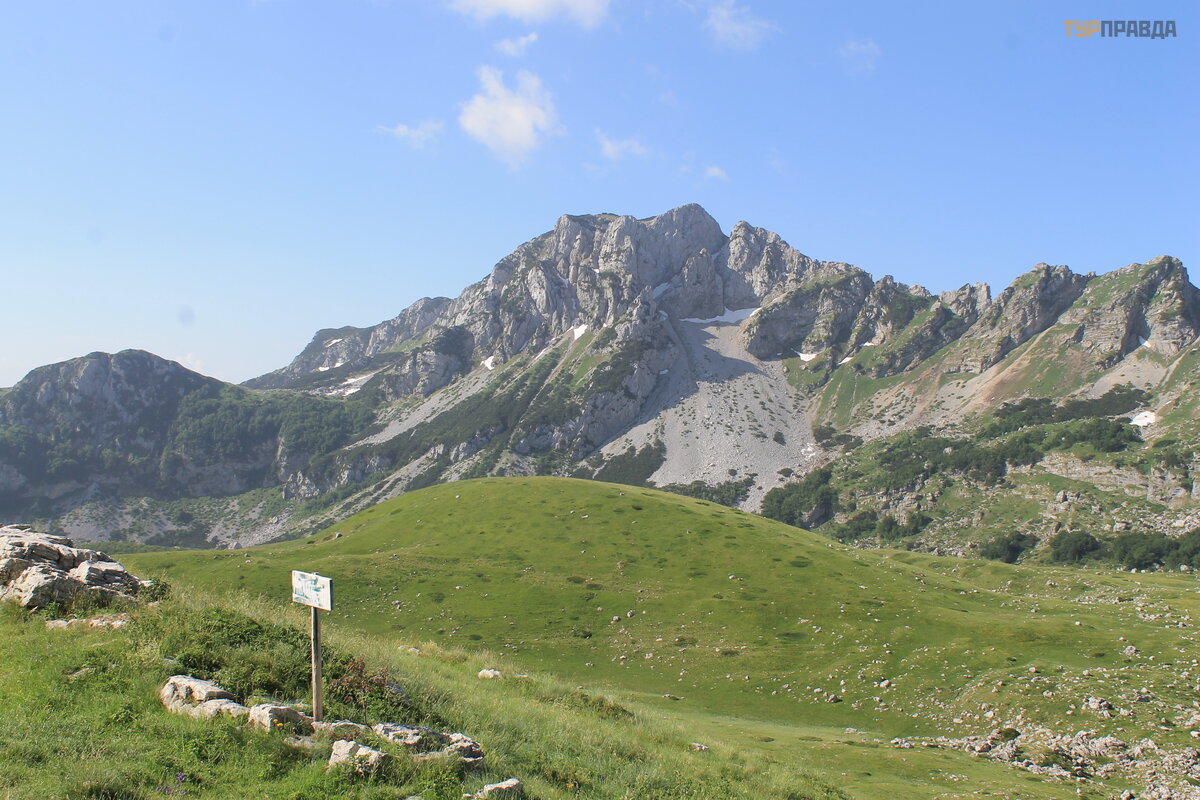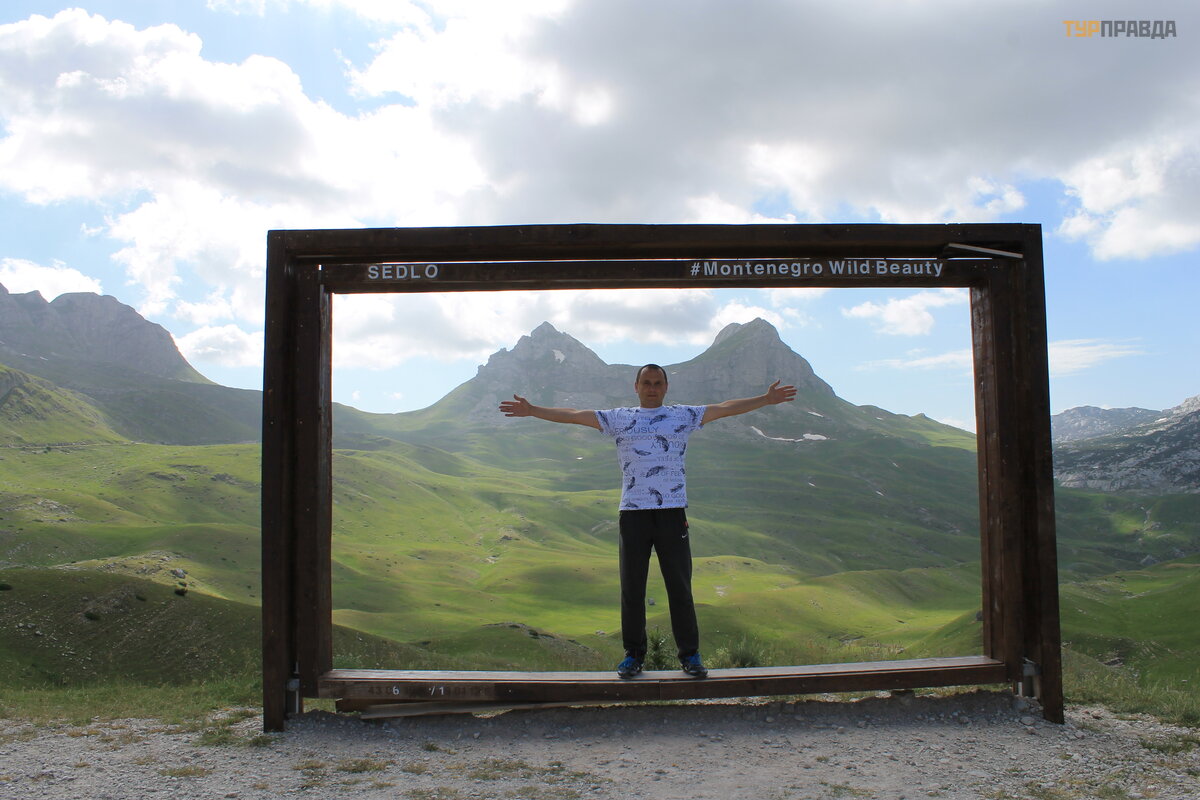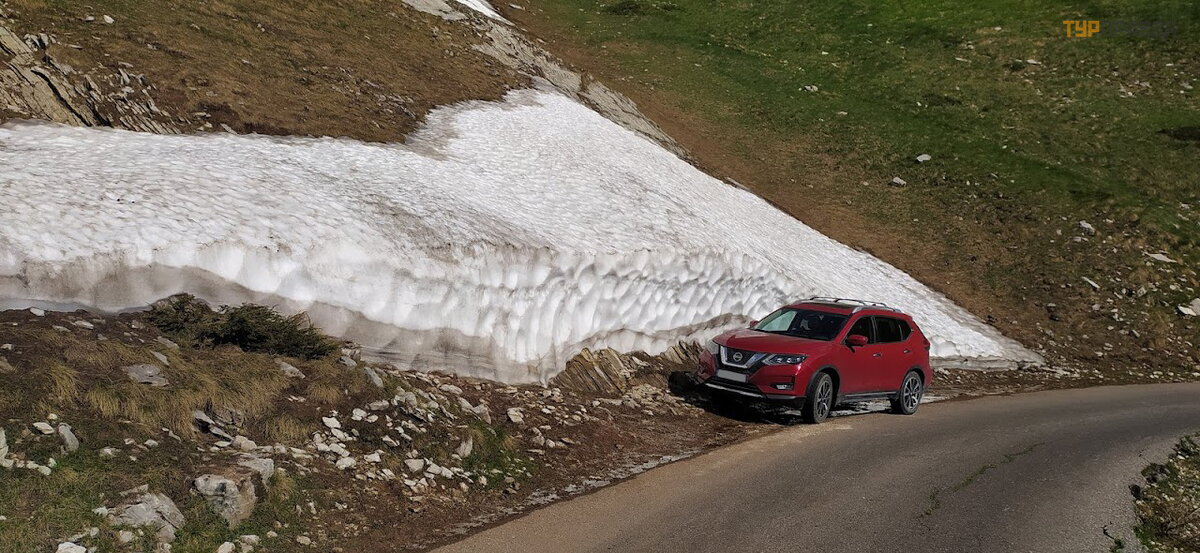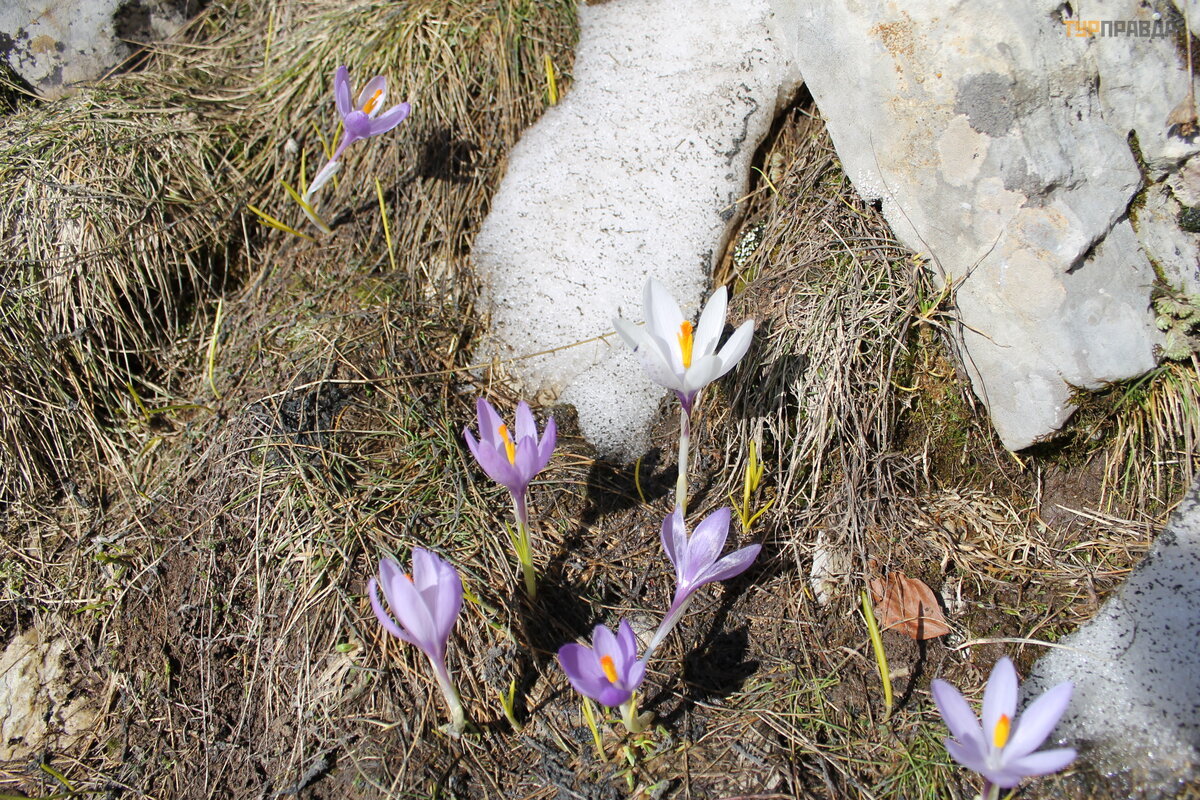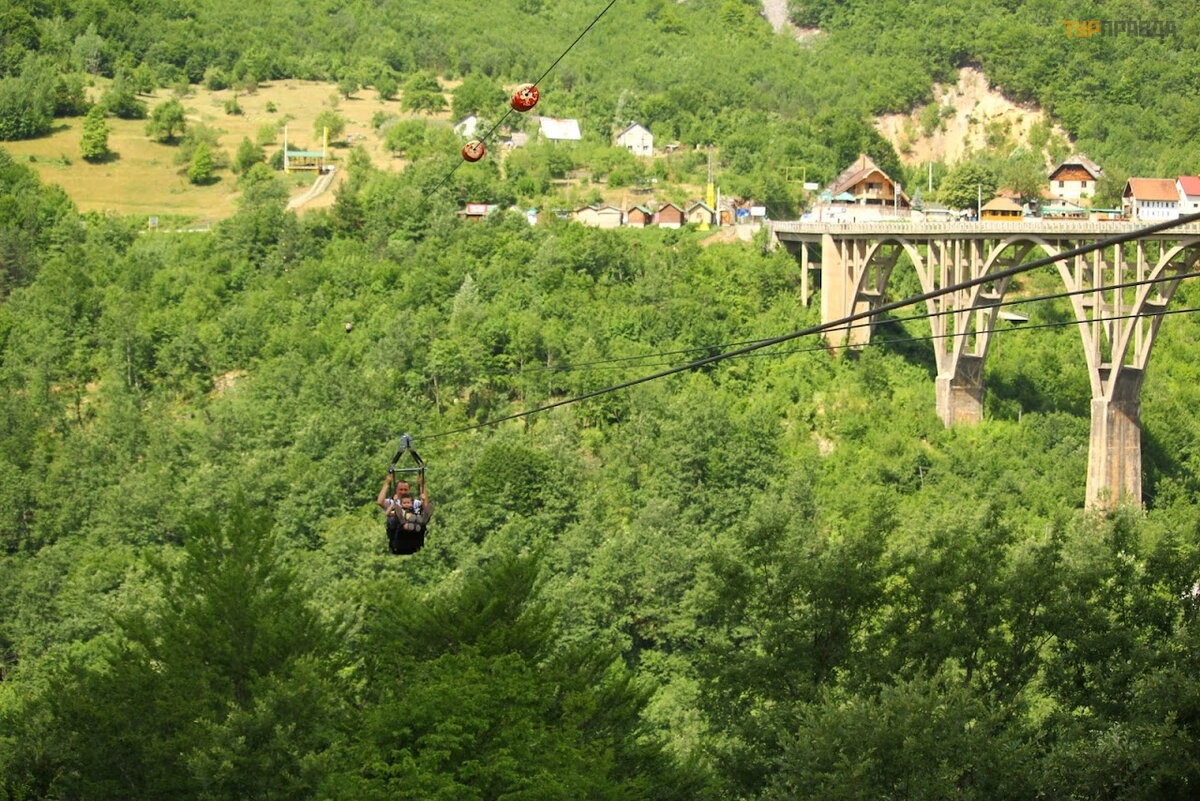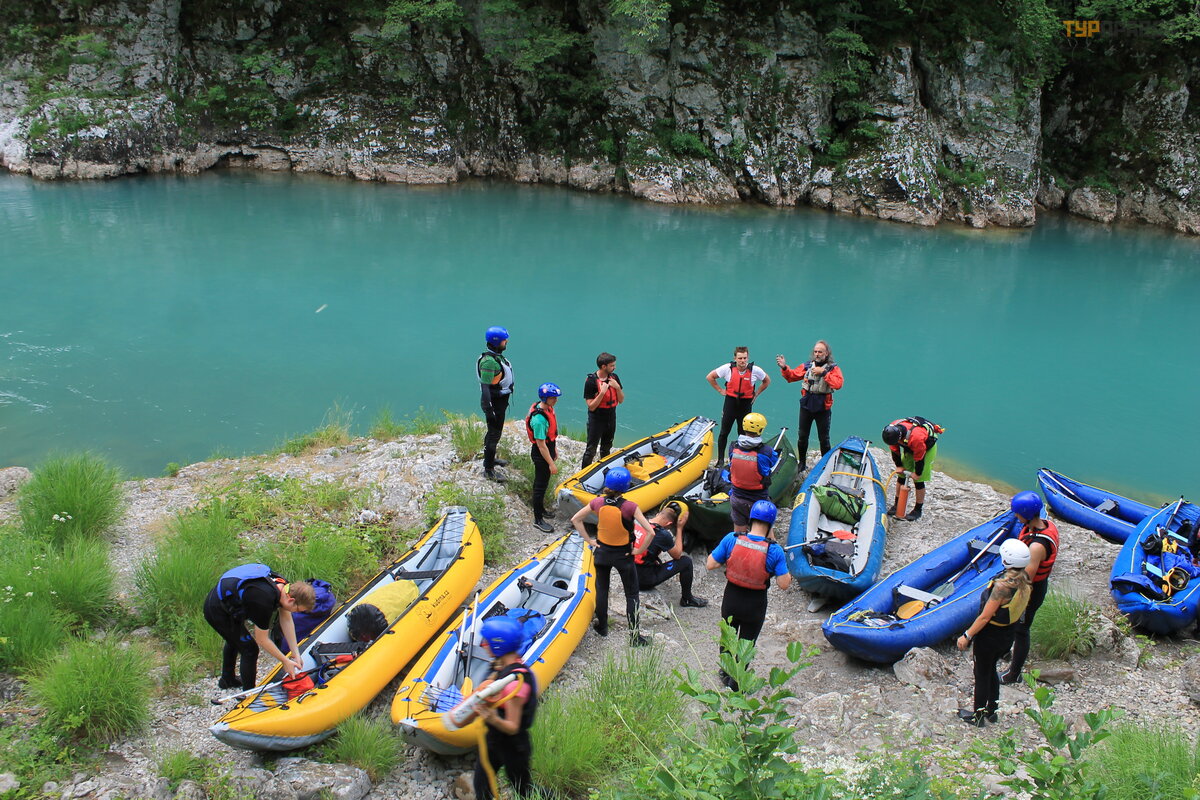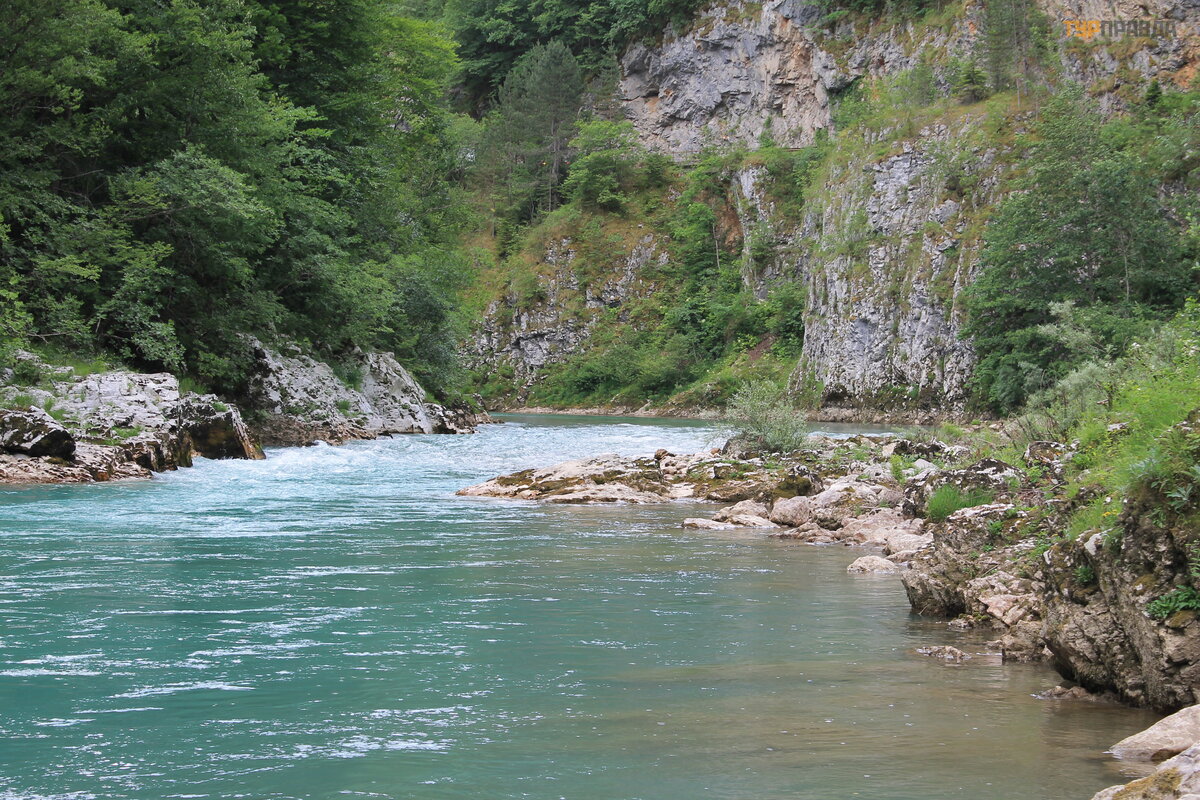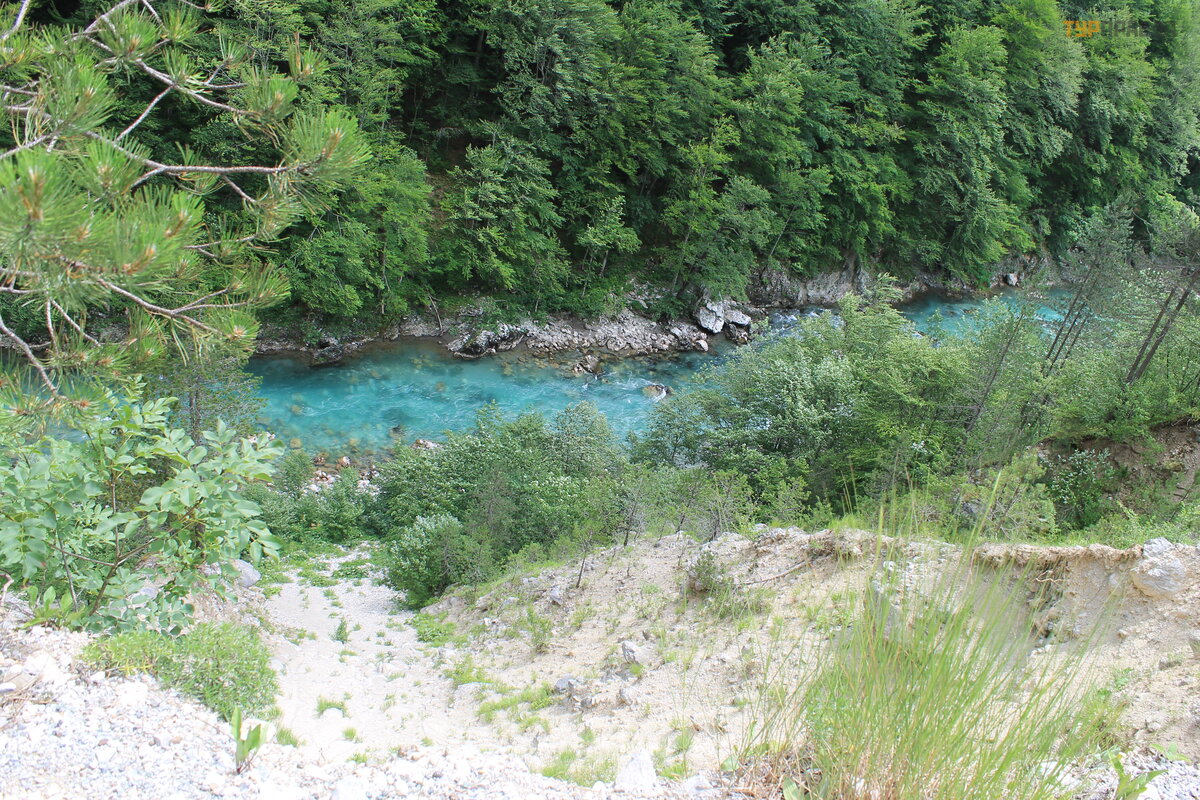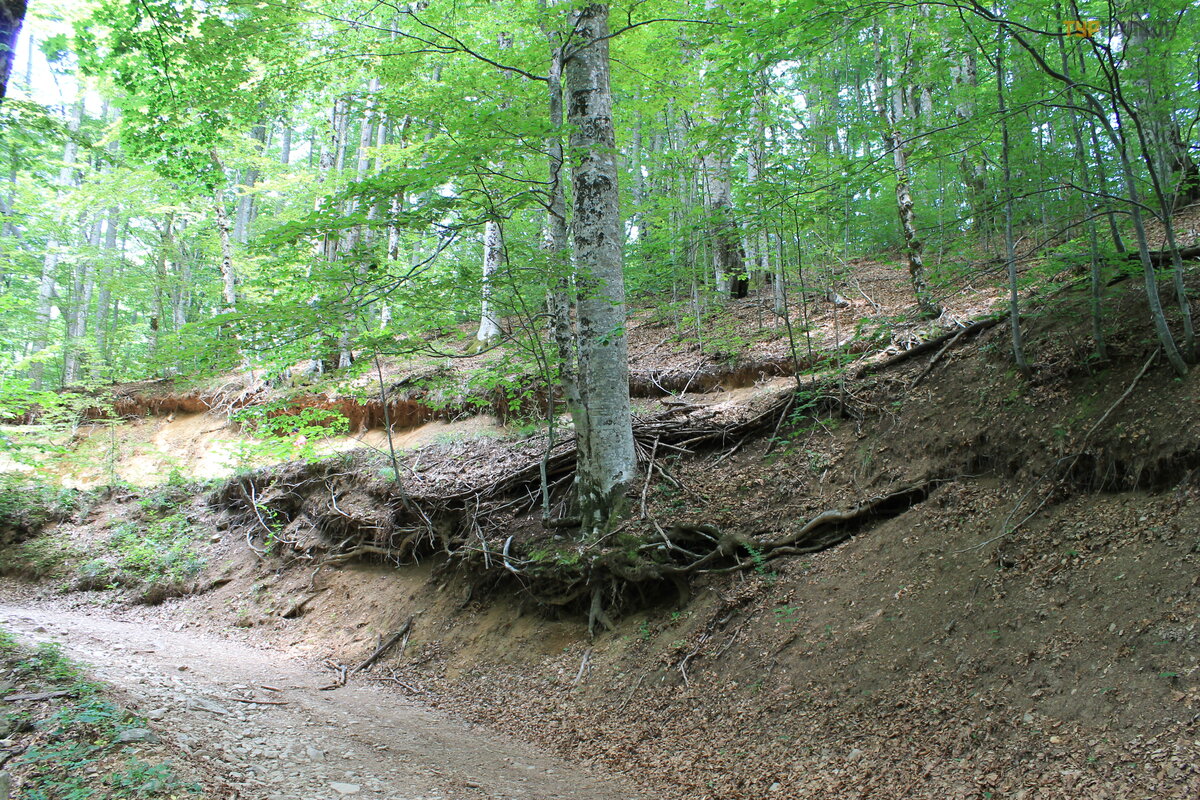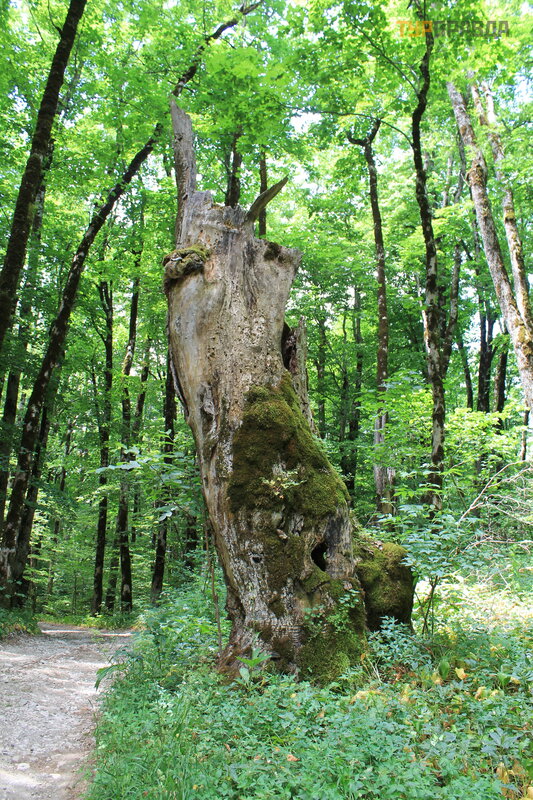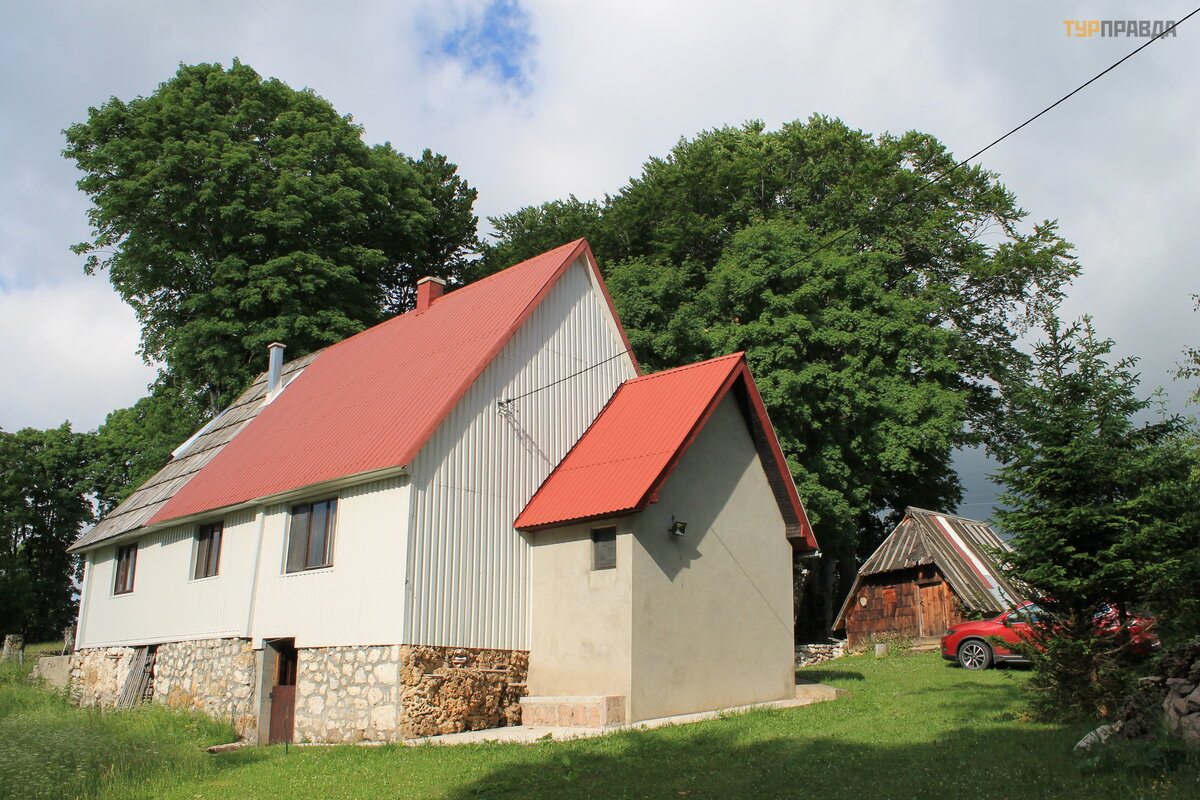To Montenegro by car from Ukraine. Part I. Road to Durmitor
After a break in 2020 due to the coronavirus pandemic, we again decided to travel by car. We already had a similar experience - in the summer of 2019 we traveled around Romania. This time it was decided to go to Montenegro. There were several reasons for this: after the 2020 quarantine, I wanted to go to the mountains and to the sea; we have long wanted to go to Montenegro, and the decision of the leadership of this country that in the summer of 2021 tourists from Ukraine will be allowed into Montenegro without vaccinations against coronavirus and tests (and upon returning home they will also do PCR tests for free) - only confirmed our decision to go there. The video from the youtube channel Veddro, in which they traveled to Montenegro during quarantine in 2020.
Our team consisted of 5 people: 4 adults (including 2 pensioners) and a 9-year-old child. The car is a 2017 Nissan Rogue SL AWD crossover with LPG. The euro exchange rate at the time of the trip is around 32 UAH. for 1 euro.
Monitoring the website Consular Service of the Ministry of Foreign Affairs of Ukraine regarding covid restrictions in different countries, having traveled in Romania and having heard a lot reviews of tourists crossing the Ukrainian-Hungarian border, we came to the conclusion that it would be best to go to Montenegro through Romania and Serbia. And, as practice has shown, we were definitely not mistaken in our choice.
I booked all the accommodation for this trip on Booking and Airbnb. Due to quarantine, the choice was quite large, despite the fact that I booked late - in early June. Due to the quarantine restrictions of the transit country (Serbia), on the way there, one reservation had to be canceled and our plans changed, although later we realized that this was done in vain, but more on that later. Like the last time when traveling to Romania, the most difficult thing was to find accommodation in Ukraine. The city of Khmelnitsky was chosen as the place of our overnight stay on the road to Montenegro, and the difficulty of finding accommodation for the night we needed was connected with the graduation party at the Academy of the State Border Guard Service of Ukraine. All daily apartments in the city for the night we needed were booked at least a month or two in advance by the parents of graduates of this university.
Day Zero (June 25): PCR test
When building a route for this trip, I had to devote a very significant part of the time to the quarantine restrictions of transit countries (Romania and Serbia). At the time of the trip, the most suitable for us from the conditions for entering Romania was entry by PCR test no older than 72 hours, while it was also possible to stay in Romania for 72 hours from the moment of entry. This option was suitable for us, since in 72 hours we managed to take a test at home, get the result and get to the border with Romania, and we can travel through Romania in transit, if desired, even in less than a day. It was more difficult with Serbia, according to their requirements, the PCR test should not be older than 48 hours, therefore, in order not to do another test in Romania, we chose the “transit in 12 hours” option for Serbia. Because of this, we had to change our plans: cancel the reservation of accommodation in Serbia and book accommodation in Romania near the border with Serbia, in the city of Timisoara. As it turned out later, we changed excellent, and at the same time the cheapest housing for our trip abroad, to more expensive and at the same time the worst in our trip...
June 25 in the morning we are in Kharkov, and the second part of our group in Poltava passed the PCR tests. The price was 700-750 UAH. (22-23 euros). They were ready by the evening (in Kharkov) and the next morning (in Poltava). It was possible to move forward.
Day one (June 26): Kharkiv - Poltava - Khmelnytsky
We left Kharkov early in the morning on June 26, around 6 am. At 10 am we picked up the second part of our group in Poltava and set out on our journey. Since our group was formed in Poltava, for calculations, we will also consider the city of Poltava as the beginning and end of our journey. We got to Kyiv quite quickly, the road is excellent, though in some places there was still reconstruction. The Boryspil highway was partially blocked, because of this, a huge traffic jam formed at the entrance to Kyiv. Saturday Kyiv was poorly loaded, we passed it quickly. Then Zhytomyr, Berdichev and, without stopping in Vinnitsa, we got to Khmelnitsky around 19-30. Since I didn’t succeed in renting an apartment in Khmelnitsky, I had to stay at a motel Avto Spa on the outskirts of the city. The motel turned out to be excellent, two rooms with bathrooms cost us 35 euros. We had a quiet room for three overlooking the courtyard; Our older group had a double room overlooking the road, but they did not particularly complain about the noise of the cars.
It was Khmelnitsky, as our first stop, that was not chosen in vain, it was difficult to go further to Kamenetz-Podolsky, one day, from Kharkov, and if we stopped in Zhytomyr, then the next day we would have to go quite a lot, plus crossing the border could take a lot of time, they did not take risks.
During the day (from Poltava) we drove about 735 km.
Day two (June 27): Khmelnitsky - Cluj-Napoca (Romania)
June 27, around 7 am, we moved further on the road. Having traveled about 220 km through Kamenetz-Podolsky and the outskirts of Chernivtsi, by 10 am we arrived at the Ukrainian-Romanian border. Just before the Porubne-Seret border crossing, we stopped at a gas station of a well-known green brand, refueled there “to full”, had a little snack and continued our journey. Since it was Sunday, there were quite a lot of cars at the border, crossing the border took about 1 hour and 15 minutes. At the same time, at the Ukrainian checkpoint, unlike in 2019, I had to go through passport and customs control separately (then it was together, I gave documents once), and I was also asked to open the trunk and examined it only superficially in a few seconds (last time not tested at all). At the Romanian checkpoint, I got out of the car only to open the trunk, which was examined superficially for a few seconds. They took my documents from my car and brought them to my car, I didn't go anywhere. Regarding covid restrictions, no one asked for vaccinations, no tests, no masks, nothing at all, it seems that there was no quarantine. No one was interested in where and for how long we were going, no one asked to confirm our transit status, no one demanded any proof. Even rovignette and green card, unlike in 2019, no one asked us.
After passing the border, we headed to the city of Cluj-Napoca. The road in northern Romania is quite difficult, as it passes through villages with a corresponding speed limit. But we were already ready for this, having the experience of 2019. We drove 325 km in Romania in 6 hours. We made a stop at one of the passes.
Romania. Pass
On the way, we stopped at some rural store, wanted to buy a Vodafone SIM card for the Internet, but it turned out that SIM cards for tourists are now absolutely free, you only need to top them up with 5 euros and you can use it for a month, here only with replenishment there were difficulties. Where they gave it to us for free, there is no way to replenish the account, then we had to look for where to replenish it at the other end of the village... Having acquired the Internet, it became much more comfortable to travel. Having stopped on the way to the supermarket, at about 20-00 we arrived at the place of our overnight stay. As it happened with us on our last trip to Romania, we again got a penthouse. The owner's name is Andrey, he spoke excellent English, he is constantly in touch, instantly responds to messages. Accommodation was designed for 4 people, but since I really liked it, and the choice in our budget was not very large, then , having agreed with the owner that there will be five of us, we decided to stay here. Moreover, both on the way to Montenegro and on the way back. And we absolutely did not regret it, Andrei and Joanna are excellent hosts, I highly recommend them! I was pleased with the self-check-in (the key to the room was in the "safe", the code for the "safe" came in the message). This housing cost us 57 euros.
We covered about 545 km in a day.
Third day (June 28): Cluj-Napoca - Timisoara
The distance we had to travel that day was quite short, about 320 km. The stop in Timisoara was forced due to covid restrictions in Serbia (we then had to transit Serbia in 12 hours). Since the expected travel time for this day was about 5 hours, we were able to afford to sleep off and leave later - around 10 am. Taking into account the stops and visits to the Auchan supermarket, we reached the place of our overnight stay at about 17-00. The hostess of the accommodation was not there by our arrival, she arrived half an hour later, apartment , located in the attic of a three-story residential building, was not cleaned after past visitors, the bed linen was not changed, the gas stove was half inoperative, and all the appliances in the apartment seemed to be quite old and brought there on the principle of not being needed in their main place of use.
This accommodation cost us 40 euros.
We covered about 320 km in a day.
Fourth day (June 29): Timisoara - Belgrade (Serbia) - Zabljak (Montenegro)
We left in the morning at about 8 o'clock, again stopped at Auchan for groceries (milk in Romania is super, meat at the same price as ours, chocolate is very tasty) and drove towards the Romanian-Serbian border near the town of Moravica. According to the plans, it was planned to refuel before the border, but in the city itself we did not stop by for a gas station, and for some reason there were no gas stations at all before the border. So, quite unexpectedly for us, we found ourselves on the Romanian-Serbian border. Despite the fact that we were leaving the European Union, there was no customs control at the Romanian checkpoint, only border control, there were practically no cars, we were stamped in our passports, and we drove on. At the Serbian post, they asked us where we were going, suspecting that we were going to rest on the sea in transit, but for some reason they were sure that we were going to Greece, you see, they didn’t look at the map and didn’t know that the path from Ukraine to Greece lies obviously not through Serbia... Well, that's okay, we put stamps in our passports, and we drove on. Again, absolutely nothing related to quarantine was asked of us, as it seemed like it didn’t exist, we didn’t set any transit time limits, so I canceled my reservation in Belgrade and changed my overnight stay to Timisoara.
Romania and Serbia are in different time zones, this should be taken into account when planning a trip, because when going there you get one hour more time, and one hour less on the way back.
After crossing the border, we headed towards Belgrade, and from there to the border with Montenegro. The road to Belgrade was excellent, most of it we drove along the autobahn. Belgrade itself met us with traffic jams, but in general we drove through it quite quickly. After Belgrade, the road went through villages, and closer to the border with Montenegro, the steppe part gave way to mountains and canyons. In general, the impression of the country was not very good, there was a feeling that we had returned 15-20 years ago: the quality of the roads, the lack of a large number of gas stations and services on them (cafes, toilets), and the most impressive was to see the policemen hiding in the bushes behind turns in settlements, we have experienced this for a long time... Oncoming drivers warn of an "ambush" with high beam headlights. There are also a lot of radars around the country that measure speed, which, depending on your speed, draw you either a sad or a cheerful smiley. The mountains looked very sad in the industrial areas, they are simply dismantled and processed into building materials, it looks very sad. I often heard about the concept of “raw material appendage”, so I think this is exactly the case. In one of the localities, the "processing" of mountains was simply massive.
From Belgrade, we headed for Cacak, and from there to the border. Closer to the border with Montenegro, the nature has changed a lot, the road went along the canyons, and the views came across just gorgeous. So, moving through a very beautiful area, we got to the border with Montenegro. When building the route, I didn’t really go into what kind of border crossing we would go through, I trusted the Google navigator, and he led through the Jabuka border crossing closest to Zabljak. When we were approaching the border crossing, I remembered video, in which the blogger told how he almost passed this border crossing, not noticing him. At that moment, I realized that this was exactly the border crossing. By the way, I advise you to watch his video in full, he gives very sensible advice. Before the trip and during it, we communicated with him via Telegram, advised a lot of sensible things, thanks to him for his help.
So, we arrived at the place where there will once be a border crossing, at the time of the trip there was a grandiose construction site. Despite the fact that Montenegro gained independence from Serbia in 2006, for 15 years they have not been able to make a border crossing in this place and the road to it. If there was at least some kind of asphalt road from the Serbian side, then from the Montenegrin side we drove for several kilometers along the construction site, through a mixture of rubble and dust, as a result, when we arrived in Zabljak, it was a pity to look at the car... Passing the border in this place was more like a formality: no one looked at or checked anything, they collected passports, stamped them, and we drove on. It took about 15 minutes to cross the border, Montenegrins didn’t ask us anything at all, there is free Wi-Fi at the post, while we were crossing the border, we managed to load a Google map, the road began to be shown in more detail.
On the way from the border to Zabljak, quite unexpectedly for us, we reached the Dzhurdzhevich bridge. The time was about 18-00, there were practically no people there, so we decided to park and admire the bridge and the Tara River.
Montenegro. Dzhurdzhevich Bridge
Montenegro. Tara river. View from the Dzhurdzhevich Bridge
Walking near the bridge, we saw a group of bikers in Ukrainian license plates. After talking with them, we found out that they were from Kyiv, that they were traveling through Hungary and Serbia, that they stood on the Ukrainian-Hungarian border for a very long time, that there were very long queues, as the Hungarians were passing through very slowly, requiring everyone to strictly observe covid restrictions and then arranging serious searches for everyone, including motorcyclists. Listening to them, we were once again convinced that if there is an opportunity to go around Hungary, it is better to go around it...
We arrived in Zabljak at about 20-00 local time, wandered around the outskirts of Zabljak a bit in search of a house, as the google navigator decided to take us along an extreme dirt road. Fortunately, the owners of the house were aware of this and posted instructions on how to get to them along with photos of the house. The house was located in the vicinity of Zabljak, in the village of Pashina Voda.
The owner of this home is a Superhost, so when I booked this home, I was expecting the best experience, and they justified. The house is located at the foot of the mountains of the Durmitor National Park at an altitude of about 1500 meters. Clean air, a view of the mountains in the snow, green grass, a cozy house. . . I wanted to stay here for a long time, it's a pity that according to our plans we had only three nights to stay here. A gift from the hostess in the form of a bottle of red wine only embellished the pleasant impressions of the house and the hostess.
Immediately after check-in, I took a photo of all the passports and sent it to the hostess to register us. The cost of registration in each of the regions of Montenegro is different, in Zabljak it is 0.8 euros per adult per day of stay, for children registration is free. As a result, registration in Zabljak cost us 9.60 euros for 3 days. The Montenegrin government came up with this registration in order to force everyone who rents out housing to tourists to pay taxes, in theory, at the exit from the country, the border guards check the payment of the tourist tax and registration. As a result, as tourists write in many reviews, some owners negotiate with hotels and register their guests in hotels and, thus, avoid taxation when renting out housing.
We drove 550 km in a day.
Day Five (June 30): Durmitor National Park
We planned to spend the next 2 days exploring the surroundings, we wanted to visit the mountains, see parks and canyons.
Pashina Water. Early morning. View of Durmitor
First of all, we went to the Black Lake. Since we lived nearby, we got there very quickly. Right next to the entrance there is a parking lot, parked without problems. Entrance to the park is paid, from an adult 3 euros, children under 7 years old are free, the cost of car parking is 2 euros, time is not limited. The visit cost us 14 euros (4 adults and parking), they didn’t take money for a child. The Internet is full of advice on how to get there for free, but we didn’t do it, the park is clean, everything is well-groomed, it’s clear that the money for entry is spent for its intended purpose, in such cases it’s not a pity to pay. You need to arrive early, by lunchtime there are many tourists who are brought by sightseeing buses from the south of the country.
Durmitor. Black Lake
Initially, we planned to walk here for two hours, but in the end it was more than three. Like many visitors to this park, we decided to walk around the lake. There are several options for how to do this. The simplest and shortest (option 1) - if the lake has dried up in half, then you can simply bypass only most of it by crossing the isthmus connecting the two parts of the lake. During our stay there was a sufficiently high water level, it was impossible to cross here. Here is the isthmus.
Durmitor. Black Lake, isthmus
The second way to get around the Black Lake is a simplified version of a complete bypass, when the path is cut in a certain place (option 2). This will probably be the best option, the road is equipped almost all the way, it is comfortable to walk.
The path around the Black Lake
But we went with the most difficult option - we decided to go around it at the water's edge (option 3).
Durmitor. Black Lake
Not only did it take at least half an hour longer, but in the end, at some point we came to a place where we had to climb a very steep climb, and it was not at all easy for our older part of the group to do this.
Durmitor. Black Lake
Further we climbed through the thickets, until we finally reached the equipped path, which is indicated in option No. 2, after that it was comfortable to walk again.
Durmitor. Black Lake
Still, we did not regret that we went this way, because there we saw a beautiful place where we made a halt, and my uncle even took a swim.
Durmitor. Black Lake
The water there is very cold, the lake is filled with melted snow from the mountains. In general, they were very pleased with the visit to the Black Lake, the views there are excellent.
After the Black Lake, we planned to visit the Churevac cliff, but since we left the house late and stayed for an hour on the Black Lake, we decided to have lunch first, and then conquer the cliff.
We went to Ž abljak for lunch, we didn’t think about choosing a place for a long time, because before that I had read a lot of positive reviews about the Or’O restaurant (43.15500839968809, 19.12026074199712). We found it without any problems, it is located opposite the Voli supermarket (a chain of inexpensive supermarkets in Montenegro), in the very center of Zabljak. We ate deliciously at the restaurant, lunch cost us 40 euros. After lunch, I went to a mobile phone salon and bought a Montenegrin SIM card. It cost me 10 euros, there was plenty of Internet for all of us, I initially took a spare smartphone with me, which worked for all of us in 4G mode - a Wi-Fi router, distributing Internet to all of us from Romanian, then from Montenegrin, and then on the way back again with a Romanian SIM card. SIM cards are special for tourists, they are sold by passport, they worked without problems for us all 11 days of stay in Montenegro, although there are horror stories on the Internet that tourist SIM cards that are not properly registered with the operator are turned off after 7 days of use.
Next we went to conquer the cliff. It is famous for the fact that from its highest point, from a height of 1300 m, a beautiful view of the Tara River opens. There are three paths to climb this cliff. After reading reviews on the Internet, we chose the third route, the furthest from us, it was positioned as the most convenient for climbing, and we were also attracted by the fact that there was a fairly large parking lot.
Churevac Rock. Map
Image taken from Travel Stories
The coordinates of the beginning of the ascent (parking) are 43.19388415685127, 19.08959218851905, the coordinates of the observation deck at the top of the cliff are 43.201491921435675, 19.093059001994686. A cashier is on duty at the parking lot below, the entrance to the cliff is paid, but since both the Black Lake and the Churevac cliff are part of the same Durmitor National Park, the ticket for visiting them is common, so visit these objects on the same day and you will have to pay once, and then you can simply present an existing ticket.
Churevac Rock. View of the Tara River
Even despite the haze that was present that day, the views from the top of the cliff are awesome, and the river below with such clear water that I could see its sandy bottom with binoculars.
Churevac Rock. View of the Tara River
It was difficult to climb only at the very beginning, when the ascent was quite steep, and then it was much easier, but during the intensive ascent, I was very thirsty, we unexpectedly drank a lot of water. So take plenty of water with you! There were not many tourists: when we drove to the parking lot, there were 3 more cars, and when we left, there were about five.
Next, we decided to ride along the Durmitor ring. Driving along the Durmitor ring, we deviated slightly from the route and drove into the city of Niksic to refuel with gas, since the only gas station known to us in Zabljak was not working (the gas carrier had just arrived, and we could not wait for about an hour). Returning to the Durmitor ring, we headed towards the town of Pluzhine and stopped by to see the Piva Monastery. It is known for the fact that during the construction of the Piva reservoir, it was completely dismantled in the old place, transported to a new place and reassembled, retaining its original appearance.
Piva Monastery
Since we were behind schedule from the very beginning when we left home in the morning, when visiting the Black Lake and when we had an unplanned stop in Niksic, in the end we arrived at the Piva Monastery around 19-30, we didn’t find anyone there, wandered around the territory, looked at the monastery from the outside and drove on.
After that, we went to Piva Lake. This lake is man-made, it was formed as a result of the construction of a dam on the river.
The views are great, especially if you look at it from the Eagle Road, which rises above this lake.
After wandering along the lake for a while, we set off on our journey, ahead of us was the most extreme and most picturesque road in Montenegro - the Eagle Road, also known as the P14 road.
It starts immediately after the bridge over Lake Pivskoye (an inconspicuous sharp turn into a tunnel in the rock) and goes rapidly up in an unequipped serpentine.
The "charm" of this serpentine is that its width is only 1.5 car widths, it is difficult to pass with oncoming traffic, you need to look for a suitable place, the tunnels are not equipped in any way and are not protected from falling stones from above, and in places where the serpentine turns 180 degrees "blind" tunnels in the rocks, that is, when entering the next turn in a serpentine, you do not understand whether the oncoming traffic is coming and what to do if it is going, since it is unrealistic to disperse at the place where the serpentine turns inside the tunnel.
Piva Lake. Eagle Road
We were lucky, and in the places of "blind" turns there was no oncoming traffic, there were several cars in open areas, they drove off with them, picking up a convenient place. Worst of all, if not a tourist, but a local, is driving towards them, they drive there fearlessly, at fairly high speeds, they are used to seeing... After some time, the serpentine ended, and we drove onto a plateau, drove past some villages. On one of the straight sections of the road, we were overtaken at a decent speed by a local with a loaded trailer. Thoughts had already begun to visit me that this was the end of the extreme for that day, but this opinion was erroneous... It was starting to get dark. And then the road went up again, winding through the mountains. Soon we caught up and overtook that car with a trailer, it was hard to see it loaded up. The Google navigator showed that there were about 20-25 kilometers and more than an hour’s drive to the house, and we kept climbing and climbing. . . Initially, we planned to see the Stozhina mountain and the Sedlo pass, but nothing was visible in complete darkness. The road, one and a half cars wide, went up and up, constantly winding around the mountains, on one side of the road - sheer cliffs, on the other - a cliff without a chipper. And total darkness. And from time to time, oncoming lanes... Then my companions already became scared: my uncle sat silently, later said that he was praying at that moment... The fact that it became dark on the street played into the hands to some extent, since the oncoming lane became visible from afar, on time it was possible to pick up a place for passing and not be afraid of it because of a blind turn. But soon that car with a trailer caught up with us and began to blind us with headlights from behind. When the google navigator began to show that we had a little more than 10 kilometers left, and we continued to climb, doubts began to creep in, although there was no reason not to trust the navigator, especially since I was working on this route at home and understood that it takes us to the house. After some more time, we finally reached the Sedlo pass. There we saw a lot of cars with tents, fires, there was a whole "town" of tourists. After that, the road went down and we still had confidence that we would get home today. The descent was quite easy and fast, and soon we found ourselves at a familiar house. It was then that I remembered that Zabljak itself is located at an altitude of about 1500 meters and I understood why the ascent along the Eagle Road was so long, and the descent so fast.
We covered 200 km in a day.
Sixth day (July 1): Tara river canyon
After waking up in the morning, we had breakfast and got ready to move on to our next tour of the northern part of Montenegro, according to the plans, it was to visit the canyon of the Tara River, the Dzhurdzhevich Bridge, ride the Zip-line and visit the Biogradska Gora National Park. But my companions liked the Eagle Road so much that we decided to slightly correct our plans and return to it again, but already during daylight hours, to see it and appreciate all the beauty.
Quite quickly, in about 20 minutes, we climbed to the Sedlo pass, and then drove even further to the observation deck with a photo frame for this pass (43.10436297357907, 19.020170300626322).
Photo frame "Saddle Pass"
On the way we stopped many times, in one place we found a fairly thick layer of snow.
In general, there was a lot of snow there, just two weeks before our trip, this road was cleared of it and it became possible to move there.
After walking there for about an hour, we again went to Zabljak, and from there to the Dzhurdzhevich bridge. Since it was about 11 o'clock, there were much more people there than the first time at 6 o'clock in the evening. We came to this bridge for a reason, we wanted to ride a Zip-line there. The cost per adult is 20 euros, they agreed to ride the child for free, but on the condition that he will be with one of the adults. For an even distribution of weight, the child should have been rolled along with his mother, and not with me, but he categorically wanted only with me. As a result, we have a total weight of about 110+ kg, and my wife’s is less than 50, we flew over the Tara River at high speed and at the finish line we were slowed down with the help of 3 special speed dampers, and my wife had to hold out, because of her low weight she did not reached the finish line. I really liked the attraction, the child wanted to ride more.
Zip-Line near Dzhurdzhevich Bridge
There were photographers at the finish line, taking pictures of us, and then they offered us our pictures for 10 euros, and we agreed. Returning to the starting point in their car, we wandered a little more along the bridge, took pictures and drove along the Tara River south to the Biogradska Gora National Park. It started to rain.
On the way, we stopped several times in beautiful places, took pictures, rain covered us several times, but each time we ran away from him, and then he caught up with us. We arrived at the Biogradska Gora park around 13:00. Check in it cost us 12 euros.
Biogradska Gora
Biogradska Gora
It is famous for having the oldest forest in Europe. We wandered through the forest, looked at the lake, spent a total of about 1.5 hours there, didn’t see anything very interesting, and, since the rain caught up with us again, we decided to go further.
We drove to the city of Kolasin, had lunch, refueled with gas and headed home, but not on the same road that we drove here, but through Shavnik.
House in Pashina Voda
Three nights in this house cost us 123 euros.
We covered about 220 km in a day.

